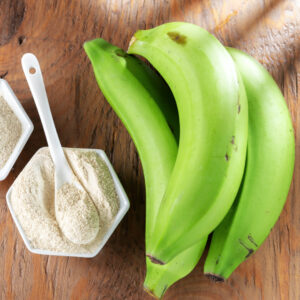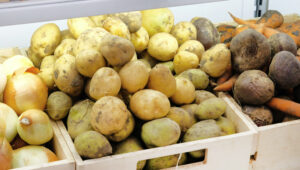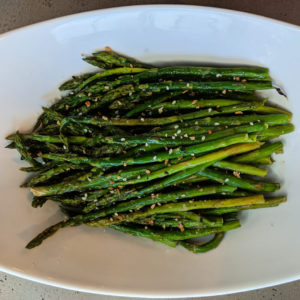Prebiotics
Prebiotics Defined
Since 2016, the International Association of Probiotics and Prebiotics (ISAPP) has defined prebiotics as “a selectively fermented ingredient that results in specific changes in the composition and/or activity of the gastrointestinal microbiota, thus conferring benefit(s) to host health.”
Basically, prebiotics are a type of nutrient that we as humans are not able to digest. However, gut bacteria are able to break prebiotics down and provide a benefit to the host. 
The ISAPP has the following requirements for prebiotics:
- It has to be resistant to stomach acid and make it to the colon without being hydrolyzed by the acid, or some other enzyme later on. It also cannot be absorbed by the colon as it is. That is to say, it has to make it to the colon for the bacteria and not be used by the body in some other way.
- It has to be able to be fermented, or used by the bacteria. Not just any compound will do. Bacteria have preferences too.
- The compound will contribute to beneficial bacteria’s growth or metabolite production in some way that benefits the human host.
Types of Prebiotics
Certainly, there are many types of prebiotics. And like most things in the gut health field, research methods and technological advances continue to further our understanding of things, including the topic of prebiotics.
Now, the following is not a comprehensive list of types of prebiotics. However, these are the most studied prebiotics. Furthermore, it’s important to know that some foods may have more than one type of fiber, which is why they may be on more than one prebiotic list.
Fructooligosaccharides (FOS)
Firstly, FOS is a carbohydrate made up of short chains of fructose molecules. Fructose is a specific type of sugar.
Sources of FOS:
Jerusalem artichokes, asparagus, banana, onion, chicory root
Galacto-Oligosaccharides (GOS)
Secondly, GOS is primarily produced after an enzymatic reaction breaks apart lactose (think dairy). It is also found in a few plant sources.
Sources of GOS:
Dairy products after enzymatic reaction, legumes, root vegetables
Resistant Starch (RS)
Thirdly, RS is a type of starch that isn’t broken down by digestive enzymes but passes through to the colon.
Sources of RS:
Oats, cooked rice, legumes, raw potato, green bananas
Inulin
Fourthly, inulin is a group of naturally occurring polysaccharides, and like FOS, falls under the broader category of Fructans.
Sources of Inulin:
Leeks, asparagus, onions, garlic, chicory, oats, soybeans, Jerusalem artichokes 
Human Milk Oligosaccharides (HMO)
Fifthly, HMO is unique to human breast milk and selectively feeds bifidobacteria to support an infant’s developing microbiome.
Sources of HMO:
Human breast milk 
Xylooligosaccharides (XOS)
Sixthly, XOS is a carbohydrate made up of repeating molecules of xylose, a form of sugar.
Sources of XOS:
Milk, honey, bamboo shoots, sugar cane
Eat Foods Rich in Prebiotics!
Reviewing the sources of prebiotics highlights the need to eat a diverse diet high in vegetables, fruits, and whole grains. Eating healthfully provides a wide range of vitamins and minerals for you, and a great meal for your native and transient gut microbiome.
The content in this post is not intended to be professional medical advice, diagnosis, or treatment. Always seek the advice of your physician or other qualified health providers with any questions you may have regarding a medical condition.
Written by Lorilyn Van Dyke
Sources
Davani-Davari, D., Negahdaripour, M., Karimzadeh, I., Seifan, M., Mohkam, M., Masoumi, S. J., Berenjian, A., & Ghasemi, Y. (2019). Prebiotics: Definition, Types, Sources, Mechanisms, and Clinical Applications. Foods (Basel, Switzerland), 8(3), 92. https://doi.org/10.3390/foods8030092
International Scientific Association for Probiotics and Prebiotics. (n.d.). Prebiotics. Resources. https://isappscience.org/for-scientists/resources/prebiotics/.
Lin, S. H., Chou, L. M., Chien, Y. W., Chang, J. S., & Lin, C. I. (2016). Prebiotic Effects of Xylooligosaccharides on the Improvement of Microbiota Balance in Human Subjects. Gastroenterology research and practice, 2016, 5789232. https://doi.org/10.1155/2016/5789232.

 New customers! Get 11% OFF your first Flourish order with Code FRESHSTART11
New customers! Get 11% OFF your first Flourish order with Code FRESHSTART11